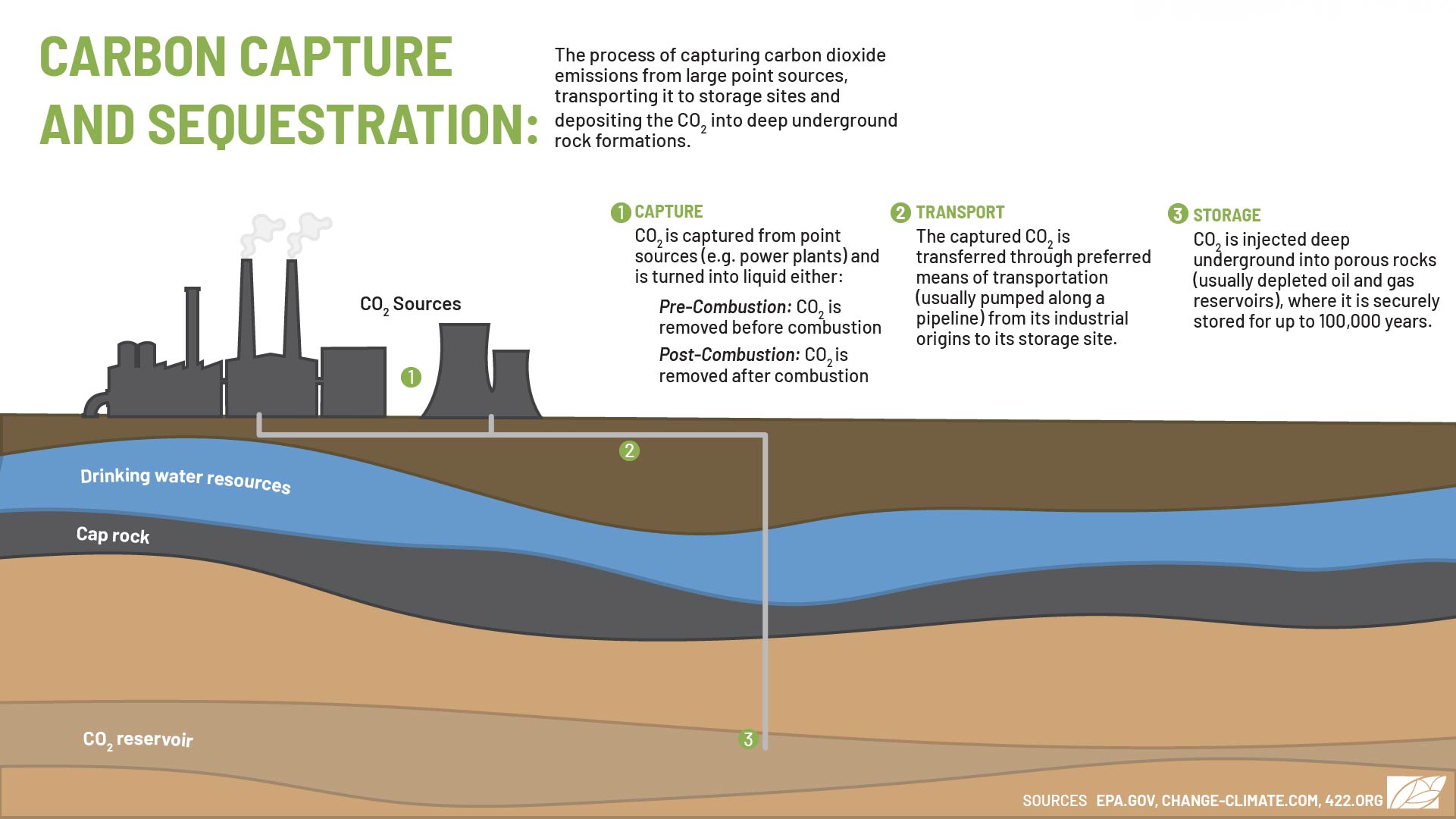The Biden administration told state governors it wants states to run underground injection permit programs necessary for carbon capture and sequestration project development and said it will provide $50 million in grants for states to do so.
The Indiana Department of Natural Resources, which oversees the state’s oil, gas and water well permits, said it did not intend to seek state-level primacy over the underground injection permitting program “at this time.”
Carbon capture is the collection of carbon dioxide from emitting facilities before it enters the atmosphere, turning it into a part-gas, part-liquid substance called a supercritical fluid. Most carbon capture projects, about 70%, are used to extract more oil and gas by pumping the collected carbon dioxide into the ground to dislodge more fuel from wells.
The carbon dioxide can also be injected deep underground, where it can be stored permanently. Carbon capture and sequestration technology has been around for decades, but only a few projects have proven effective.

The Biden administration sees carbon capture and sequestration as a pathway to lower carbon pollution and reduce climate change impacts. It has invested billions of dollars allocated by Congress through two major pieces of legislation into making carbon capture and sequestration viable and effective over time.
Indiana lawmakers have also championed carbon capture and sequestration as a way to continue using fossil fuels while reducing their impact on human health and the environment. They passed a law this year allowing the construction of carbon capture and sequestration projects as long as they received the proper permitting from the federal government.
Currently, companies require a Class VI permit from the U.S. Environmental Protection Agency for carbon capture and sequestration projects. The process for acquiring the permit is notoriously long, as the agency considers everything from site location and construction materials to the buoyancy of carbon dioxide and the geologic stability of the storage site. The process takes about six years to complete.
U.S. Environmental Protection Agency administrator Michael Regan sent a letter to governors Dec. 9 expressing the administration’s support for states to manage their own permit programs for Class VI underground injection wells in order to speed up the process and increase the amount of carbon dioxide sequestered underground.
“Well designed and deployed CCS projects can deliver environmental and climate benefits, create good-paying jobs, and address cumulative pollution impacts in historically disadvantaged and overburdened communities. Several states have expressed interest in seeking primary enforcement and permitting responsibility (primacy) for these wells — called Class VI underground injection control (UIC) wells under the Safe Drinking Water Act — to attract geologic sequestration projects to their area. The Biden-Harris Administration is committed to supporting states’ efforts to obtain Class VI primacy,” Regan wrote in a letter to state governors.
Regan said $50 million will be made available to help states pursue Class VI primacy via a grant program.
According to the EPA, only two of the 14 Class VI permit applications under review are active. The rest are either pending or have been withdrawn.
One applicant is the Vigo County-based Wabash Carbon Services LLC, a part of Wabash Valley Resources LLC. In 2019, Indiana lawmakers approved Wabash Valley Resources’ proposal to establish a carbon capture and sequestration project at the former Wabash River Generating Station coal-fired power plant. The company has been attempting to get a Class VI permit ever since. The project would be partially funded by the U.S. Department of Energy.
Companies like fossil fuel giant BP p.l.c. and Cleveland-Cliffs Inc. have expressed interest in establishing a carbon capture and sequestration project in the state. BP is eyeing a project in Benton County to receive pipe carbon captured at its oil refinery in Whiting, and Cleveland-Cliffs said it was pursuing federal funding for a project at its Burns Harbor steel mill in Porter County.
Benton County residents have told local officials they are concerned the project could negatively affect local drinking water quality.
Regan told governors that communities around the country have similar qualms.
“[D]uring my travels across the country, community residents have shared their concerns about the safety of [carbon capture and sequestration] and [carbon dioxide removal] projects and worry that their communities may bear a disproportionate environmental burden associated with geologic sequestration,” Regan wrote. “States and EPA must work together to address these concerns and set a strong foundation of practices that will protect our most vulnerable communities while encouraging the development of Class VI UIC state primacy programs. As EPA considers state Class VI primacy applications, we will be looking for approaches that balance the use of geological sequestration with mitigation of impacts on vulnerable communities, while ensuring protection of underground drinking water sources.”
The Indiana Environmental Reporter reached out to Gov. Eric Holcomb’s office for the Governor’s stance on a state-level Class VI permitting program, but his office has not yet responded.